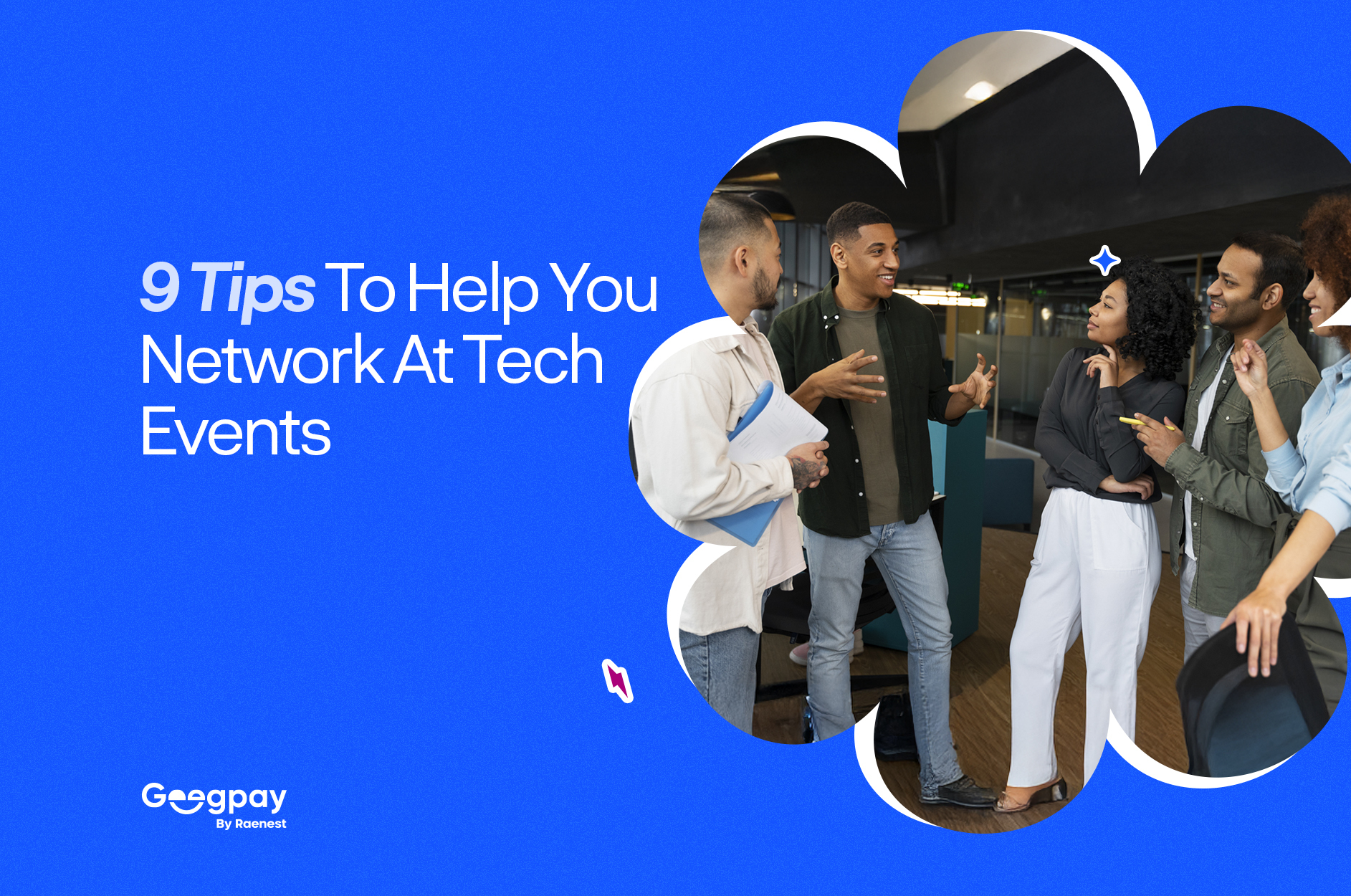
There’s a particular kind of silence that follows you into a crowded room. Not the silence of the room itself, but the one you carry—a small hush at the centre of your chest. You feel it as you step into the venue, badge dangling, coffee cup in hand, eyes scanning for what exactly? A familiar face? A conversation you could belong to? Or simply a corner where you can breathe without being noticed?
The room moves around you. Conversations drift past, some too loud, some too rehearsed. People circulate through exhibition booths, settle into panel discussions, or linger near coffee stands. But you’re yet to decide what to do, and the awkward smile won’t leave your face. If this is you or you know someone who fits this profile, this guide is for you.
Welcome to the art of networking at tech events or any event, really. I’d be breaking it into 9 tips to help you navigate any event you intend to attend soon. In the same vein, if you’re looking for something to help you build a network as a whole, here’s a guide to help you do just that.
1. Find the Edges of the Room
Not every conversation worth having happens in the middle of a crowd. Sometimes, the most honest exchanges happen in the quieter corners—by the coffee station, near an art display, or even along the hallway.
If you feel overwhelmed, step aside. Observe. You’ll notice others who are doing the same. These are perfect moments to start a conversation with someone who’s also looking for a breather. You don’t need a rehearsed line; simple observations like “this coffee queue is where the real networking happens” can spark genuine, low-pressure interactions.
2. Aim for One Meaningful Conversation
There's often an unspoken pressure to collect as many contacts as possible. But quantity doesn’t always translate to quality.
Instead of trying to meet everyone, give yourself a simpler goal: have one good conversation. One that feels real, where you’re genuinely interested in what the other person has to say. That’s enough. Because that single, well-lived conversation can lead to something far more valuable than a dozen hurried introductions.
3. Prepare Lightly, Stay Curious
It’s good to know who’s attending. It’s helpful to understand the event’s theme. But don’t burden yourself with scripts. Over-preparing can make you stiff and anxious.
What works better is a light touch of preparation:
Stay flexible. Let conversations flow naturally.
4. You Don’t Need to “Work the Room”
Forget the idea that you need to circulate endlessly to be considered a good networker. Presence isn’t about numbers; it’s about attention.
It’s perfectly fine to:
You’re not avoiding interaction. You’re being intentional with it.
5. Use Shared Moments to Start Conversations
The best icebreakers are the ones happening around you:
You don’t need clever opening lines. Shared experiences are the easiest way to start conversations.
6. Recharge When You Need To
You don’t have to be “on” all the time. It’s okay to take breaks. Step outside. Find a quiet spot. Breathe. Tech events can be intense, but you don’t need to run on empty. Give yourself permission to step back when you need to. You’ll return to conversations feeling more present and authentic.
7. The Follow-Up is Where You Shine
If mingling on the event floor feels draining, take comfort in this: the real relationship-building happens after the event. Introverts often excel here. You have the space and time to reflect and reach out thoughtfully:
These small, attentive gestures turn casual event encounters into lasting connections.
8. Lead with Curiosity, Not Performance
You don’t need to impress people with flashy introductions. You don’t need to pitch yourself at every opportunity.
What people remember most is how you made them feel. Curiosity, attention, and genuine interest will always stand out more than rehearsed elevator pitches. Ask thoughtful questions. Listen. Respond sincerely. And finally;
9. You Already Belong in the Room, Be Present
It’s easy to feel like you’re an outsider when everyone around you seems more confident, more connected, more "in the know." But you’re not an intruder. You’re not there by accident. You’re part of the conversation simply by being present. You don’t need to prove your worth to be in the room. You’re there to learn, to share, and to connect, in your own way.
If you’re looking for a tech event that understands this, Raenest Exchange is the one for you. It is an event designed for meaningful conversations, for builders, thinkers, and those who know that sometimes, the best collaborations start with an honest chat.On October 9th 2025, in Lagos, Nigeria, we’re inviting you to be part of this exchange. Click here to RSVP and see you there.